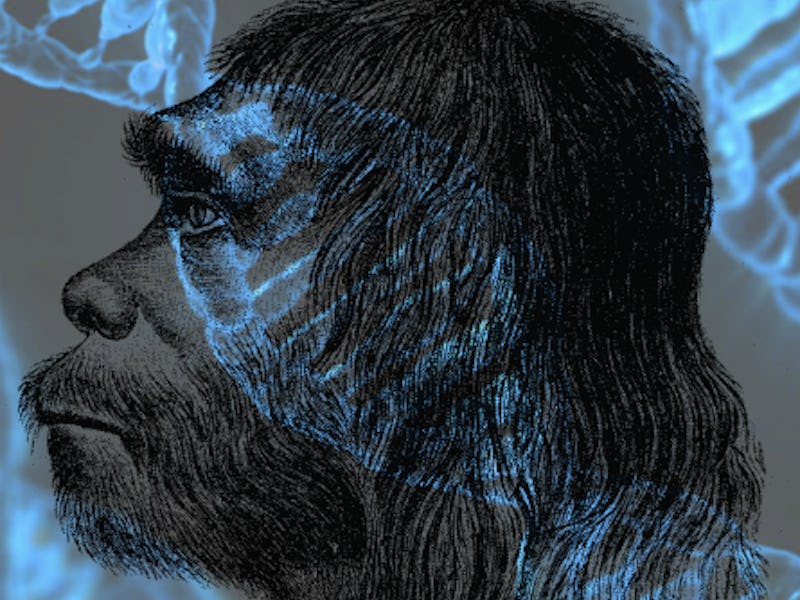Neanderthal Hook-Ups Put Ancient "Lost" Genes Back Into Human DNA
Some humans just couldn't resist inter-species sex.

Approximately 50,000 years ago, modern humans encountered Neanderthals and interbred. The consequences of these cross-species coital trysts on human populations today is starting to become clearer: Scientists believe that one to three percent of the genomes of modern Eurasians are derived from Neanderthal DNA, a genetic inheritance that’s been associated with increased depression risk, certain skin and blood conditions, and an increased likelihood of nicotine addiction.
The way those ancient genes got into our gene pool, however, wasn’t exactly straightforward.
On Friday, Vanderbilt University professor Tony Capra, Ph.D. graduate student Corrine Simonti presented unpublished research at the annual meeting of the American Society for Human Genetics showing that those ancient genes were at first lost — and later returned to the modern human gene pool.
A map of early human migration in favor of the "out of Africa" theory.
Neanderthals and humans are believed to have a shared hominin ancestor, so it’s believed that many of the gene variants in question — alternative forms of genes that are found at the same place on a chromosome, known as alleles — were once common to both Neanderthals and humans. Neanderthals continued to carry these old alleles, while the ancient humans “lost” most of them over several generations. But when Capra and Simonti analyzed the genes of “supergroups” of modern-day humans, they found one particular allele, responsible for changes in gene expression at a gene called OAS, that at first seemed to be derived from Neanderthals but was in fact an ancestral human allele that was “introgressed,” or reintroduced.
This finding motivated them to find more of these “lost alleles” and track how they got back into our gene pool. To do so, the researchers “performed a genome-wide search for other lost alleles on introgressed Neanderthal haplotypes” in large groups of Europeans, East Asians, and South Asians. They found that, just as these groups of people had greater levels of Neanderthal DNA, their genomes also more consistently showed the existence of reintroduced ancestral alleles. These findings support the idea that some of the modern humans that left Africa for Europe and Asia encountered Neanderthals there and mated, and thereby reintroduced ancestral alleles back into their offspring, together with Neanderthal alleles.
Capra told Science News on Monday that present-day Europeans have about 47,000 of the reintroduced ancestral alleles and East Asians carry more than 56,000.
Neanderthal alleles were lost from the human gene pool then re-introduced as humans mated with Neanderthals after leaving Africa.
Whether or not it’s specifically these ancient alleles that have caused the effects previously credited to Neanderthal genes, like depression, isn’t yet known, but the researchers also looked at the health record data of 20,000 people of European-ancestry to test whether reintroduced ancestral alleles were correlated to any specific health effects. They note that they “identified and replicated several novel associations with clinical phenotypes that are likely driven by these introduced alleles,” but it’s not yet certain whether these clinical effects are because of the ancient alleles or Neanderthal inheritance.
Additional testing is needed to know exactly how our lives are affected by ancient alleles, but one thing is for certain: Our ancestor’s decision to mate with other members of the hominin family tree was an ancient hook-up choice that still has repercussions today.
Thanks to evolution, genes linked to intelligence are becoming more scarce. Check out this video to find out more.